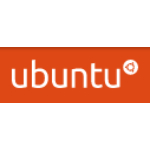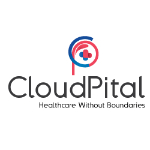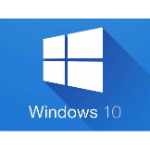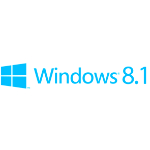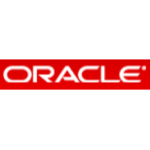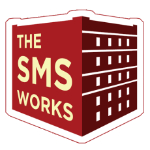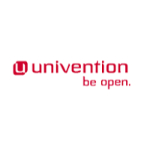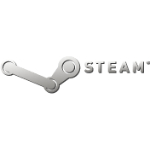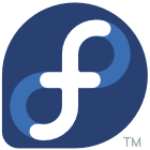List of Best Operating System
Showing 10 of 12 productspowerful and upgraded operating system from Apple - OSX El Capitan. With its sleek design and enhanced features, this software brings a whole new level of efficiency and user experience for Mac users. Get ready to explore the new El Capitan and revol...Read Apple OSX El Capitan Reviews
Ubuntu is a powerful, open source operating system that combines simplicity, security, and flexibility. Developed by a vibrant community of experts, Ubuntu offers a smooth and seamless computing experience for individuals, businesses, and institution...Read Ubuntu Reviews
Cloudpital is a leading healthcare software solution designed to streamline and optimize daily operations for hospitals and clinics. With user-friendly interfaces features, Cloudpital empowers healthcare providers to deliver efficient and high-qualit...Read Cloudpital Reviews
Windows 10 is the latest operating system from Microsoft that combines the best features of its predecessors with new enhancements. Designed to be user-friendly is a , Windows 10 offers a seamless experience across devices and a wide range of tools t...Read Windows 10 Reviews
Windows 8.1 is a latest operating system from Microsoft that promises to revolutionize the way we interact with our devices. With its sleek design features, Windows 8.1 offers a seamless is a user experience. Get ready to experience the evolution of...Read Windows 8.1 Reviews
Oracle Solaris is a highly versatile and powerful operating system that offers exceptional performance, reliability, and security. With a rich history and continuous innovations, Solaris is trusted by businesses of all sizes to deliver unparalleled s...Read Oracle Solaris Reviews
SMS Works is a solution for all your SMS marketing needs. With its user-friendly interface is a features, this revolutionary platform simplifies the process of sending and managing text messages to boost your business. Get ready to elevate your marke...Read The SMS Works Reviews
Univention Corporate Server is a versatile is a server solution designed to meet the diverse needs of modern businesses. With its user-friendly interface and robust capabilities, UCS offers a seamless way to manage applications, users, and devices in...Read Univention Corporate Server Reviews
SteamOS is a gaming operating system designed for seamless and unparalleled gaming experiences. Developed by Valve Corporation, SteamOS is a Linux-based software that combines powerful graphics and cutting-edge technology to provide gamers with a dyn...Read SteamOS Reviews
Fedora is more than just a simple operating system, it is a dynamic and diverse community-driven project that provides users with the latest advancements in open source technology. With its robust features and constantly evolving platform, Fedora emp...Read Fedora Reviews
- What Is Operating System?
- Top Reasons Why Businesses Need Operating System?
- What Are the Top Key Features of Operating System?
- What Are the Top Benefits of Operating System?
- What Are the Steps to Choose the Right Operating System?
- What Are the Types of Operating System for Different Industries?
- What Are the Technology Trends for Best Operating System?
- What Are the Deployment Options for Operating System?
What Is Operating System?
An operating system is a software entity responsible for the supervision and administration of all applications running on a computer. The software functions as an intermediary, facilitating communication between the user's applications and the hardware components, including displays, keyboards, mice, and printers.
The presence of an network operating system is essential for the execution of applications on a computer since the best operating system provides the necessary framework for their functioning. The cloud operating system software assumes the responsibility of overseeing and coordinating the allocation and utilization of hardware resources, including but not limited to the central processing unit (CPU), memory, and peripheral devices that are interconnected with the computer system.
It also enables the computer to engage with input devices, such as a mouse or keyboard, as well as other output devices, such as a printer or monitor. One illustrative instance of a widely used latest operating system is Microsoft Windows.
In addition, there exist alternative cloud operating systems, including Mac OS, Linux, and iOS. Every kind of real-time operating system possesses distinct characteristics and capabilities, accompanied by a unique array of software programs and applications that facilitate user-computer interaction.
In the realm of computer systems, the best operating system software holds paramount significance due to its role in governing the execution of all other software components within the system. The utilization of a computer in an efficient manner would be unattainable in the absence of a suitable online operating system.
Top Reasons Why Businesses Need Operating System?
1. The effective management of hardware resources, such as memory and CPU utilization, is a critical aspect of system administration.
2. The feature of multitasking enables concurrent access to the computer system by several programs and users.
3. One potential approach to enhancing security measures involves the implementation of access restrictions on files and applications.
4. The development of user interfaces with the aim of enhancing efficiency and intuitiveness in computer interaction.
5. One of the key functionalities of the system is to establish a connection between the user and peripheral devices, such as printers and scanners, by means of an interface.
6. Data Backup and Recovery.
7. The process of establishing and overseeing networks
8. The management of system resources, including but not limited to memory, files, and applications, is a crucial aspect of system administration.
9. The management of computer access
10. The process of installing and updating software is a critical aspect of computer systems management.
This procedure involves the installation of new software applications onto a computer system, as well as the regular upgrading of existing software to ensure optimal performance and security.
11. The process of organizing computer tasks, such as antivirus scans and disk defragmenters, inside a predetermined schedule.
12. The monitoring of system performance
13. Employing system utilities and other specialized tools
14. Enabling the exchange of data between users and applications
15. The process of synchronizing time with external servers or devices.
What Are the Top Key Features of Operating System?
1. Memory Management: Memory management encompasses a range of strategies and approaches employed to assign memory to distinct processes within an best operating system software. This practice guarantees the efficient management of resources and the maximization of system performance.
2. Process Management: Process management is a crucial aspect of cloud operating system administration since it enables the effective management and control of processes. This entails activities such as the creation, suspension, and termination of processes, as well as the allocation of resources to these processes.
3. Device Management: The practice of device management encompasses the administration and regulation of physical devices that are interconnected with a computer system. This include activities such as the configuration of device settings, the management of device drivers, and other related duties.
4. User Interface: The user interface refers to the means through which individuals engage with the network operating system and diverse applications. The aforementioned components encompass visual aspects, namely windows, widgets, icons, and menus.
5. Security: The inclusion of security mechanisms within the cloud operating system software serves to safeguard the system against potential attacks or the infiltration of harmful software. The aforementioned features encompass antivirus software, user authentication mechanisms, and firewalls.
6. Networking: Networking elements facilitate the exchange of information and enable communication across diverse computer systems and devices inside a local area network or over the internet. Cloud operating system encompasses procedures for transmitting and receiving data, as well as adjusting configurations.
7. File System Management: The management of files stored on a computer is facilitated by file system management. This encompasses various operations such as file relocation, duplication, and removal, alongside the management of file permissions.
8. System Recovery: System recovery is a process that facilitates the restoration of a computer system following a system crash. This can encompass the act of returning files to a former state and resetting settings to their original default values.
What Are the Top Benefits of Operating System?
1. Improved Security: Operating system software play a crucial role in safeguarding computer hardware and data by implementing essential security measures, including access control, intrusion detection systems, and virus scanning. These parameters are designed to mitigate potential risks and ensure the integrity and confidentiality of the system.
2. Easy Access and Manipulation of Files: Best operating system are equipped with a file system that facilitates the organization and storage of data. Additionally, this feature offers users a convenient method for accessing, relocating, and manipulating files.
3. Improved Performance: Operating systems are responsible for the management of hardware resources, including as memory, processors, and data storage, with the objective of optimal allocation. This effective allocation leads to enhanced performance.
4. Enhanced User Interface: Best operating system are designed to offer a graphical user interface (GUI) that facilitates user interaction with the system, hence enhancing usability and user experience.
5. Enhanced Network Connectivity: Operating systems facilitate seamless user access and efficient data movement across both wired and wireless networks.
6. Device Drivers: Operating systems are equipped with device drivers that provide the seamless and efficient connection between users and various peripherals such as printers, scanners, and other devices.
7. Task Scheduling: Online operating system provide users with the capability to automate various processes, such as task scheduling and task scheduling optimization.
8. Strong Support of Applications: Latest operating system offer robust support for the execution of applications. Additionally, they offer a wide range of activities and responsibilities to effectively oversee the execution and allocation of resources.
What Are the Steps to Choose the Right Operating System?
1. Determine your computing needs: Prior to choosing any operating system software, it is crucial to thoroughly evaluate your computer requirements. This entails comprehending the specific hardware configuration, desired programs or applications, and required services.
2. Research operating system software: Conduct a comprehensive investigation of various best operating system and their respective characteristics in order to ascertain the most suitable option for your needs.
When evaluating a technology solution, it is important to take into account many factors such as cost, speed, scalability, user-friendliness, security, updates, and support.
3. Evaluate system compatibility: Certain operating systems may exhibit incompatibility with the hardware and/or pre-existing software configurations. It is imperative to ensure that the chosen operating system is compatible with the existing hardware and software prior to making a purchase decision.
4. Purchase and install: After making a decision on the most suitable online operating system, go to acquire the required software and proceed with its installation on your computer. It is imperative to meticulously adhere to the guidelines that have been supplied.
Moreover, certain real-time operating system may necessitate supplementary hardware in order to get optimal performance.
5. Maintain the system: The effectiveness of an best operating system is contingent upon the level of maintenance it receives. It is imperative to ensure that your system is up-to-date by regularly installing the most recent security patches and services.
Furthermore, it is imperative to frequently perform system backups as a precautionary measure against potential data loss or file corruption.
What Are the Types of Operating System for Different Industries?
The selection of operating system software utilized across many industries is contingent upon the industry itself and the unique application requirements. Types of operating system of various industries, including manufacturing, healthcare, finance, and government, frequently necessitate the utilization of a tailored operating system to enhance the efficiency of data access and management.
The industries in question utilize various forms of network operating system software, such as embedded systems, real-time operating system, and distributed computing. Embedded systems are frequently employed in the industrial sector to regulate machinery, hence enhancing operational efficiency.
Additionally, the utilization of real-time operating system facilitates predictive maintenance, leading to cost optimization in operations. Distributed computing in the healthcare sector facilitates the effective exchange and monitoring of patient records across numerous medical institutions, hence enhancing operational efficiency.
Best operating system play a crucial role in the realm of finance by facilitating secure banking operations and transactions, as well as enabling data analysis and risk management activities. In the realm of governance, operating systems are employed for the purpose of safeguarding and administering sensitive information and data, including classified data and desktop computers.
What Are the Technology Trends for Best Operating System?
The technology trends for best Operating System Software are:
1. Development of Cloud-Based Operating Systems: The popularity of cloud operating system is on the rise due to their capacity to offer efficient access to applications hosted in the cloud, as well as enhanced security, scalability, and cost-effectiveness.
Two well-known instances of cloud-based operating systems are Google's Chrome OS and Amazon's Fire OS.
2. Automation and Machine Learning: The increasing prominence of Artificial Intelligence and Machine Learning (ML) is observed in the development of latest operating system as technology continues to evolve.
Artificial intelligence (AI) and machine learning have the capability to automate operations that are manual and repetitive, resulting in enhanced efficiency and accuracy.
Additionally, these systems have the capability to enhance the user experience by identifying and analyzing user habits and preferences, hence enabling the customization of the system to better suit individual users.
3. More Advanced Security: The proliferation of malware, ransomware, and phishing has led to a heightened emphasis on security in the realm of online operating system.
In response to this matter, developers are presently directing their efforts towards the development of systems that incorporate sophisticated security measures, like encryption, biometric authentication, and virtual private networks.
4. Increased Compatibility: The growing prevalence of mobile and Internet-connected devices has underscored the importance of ensuring interoperability among various operating systems. Developers are making efforts to ensure the compatibility of their systems with other platforms and services, aiming to achieve universal accessibility.
5. Development of Open Source Operating Systems: The popularity of open source best operating system is increasing gradually due to their inherent customizability, which surpasses that of proprietary online operating system. Linux and FreeBSD are widely recognized as prominent open-source real-time operating system.
What Are the Deployment Options for Operating System?
Various deployment alternatives for Operating System Software can be considered, such as the conventional on-premise installation, deployment through virtual machines, cloud-based deployment, utilization of configuration management tools, or even adopting a mobile device approach.
The available choices for deploying an network operating system are contingent upon the diverse use scenarios and the particular platform or technology stack employed. In the context of implementing an latest operating system through a conventional on-premise setup, the available methods encompass physical media like as CDs or DVDs, ISO images, network installations, and hard disk cloning.
When considering the deployment of virtual machines, there are several choices available. One option is to install the online operating system image as a component of a virtual machine template, commonly referred to as a per-machine template. Another option is to utilize an image repository such as OpenStack Glance, Azure Marketplace, or Amazon Machine Images.
When considering cloud deployment, viable alternatives encompass the utilization of platforms such as Google Compute Engine, Amazon Elastic Compute Cloud, or Microsoft Azure.
Configuration management tools, such as Puppet, Chef, Ansible, and SaltStack, can be utilized for the purpose of automating the deployment and configuration of the operating system.
In the context of distributing an operating system on mobile devices, viable approaches encompass the utilization of a Mobile Device Management solution or a software distribution tool for the remote deployment of said online operating system.
In general, the optimal choice of deployment method for an cloud operating system is contingent upon its specific utilization scenario.

